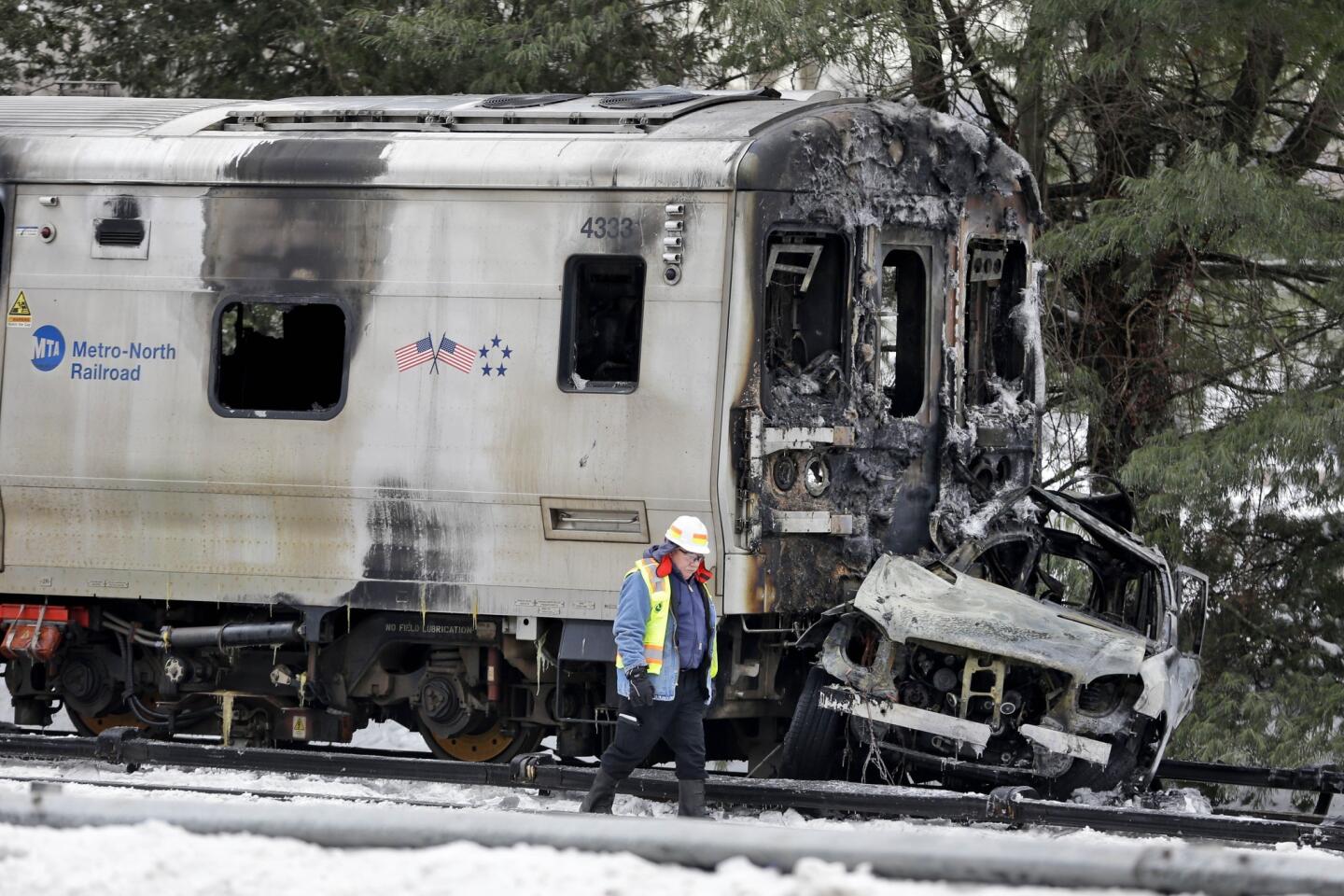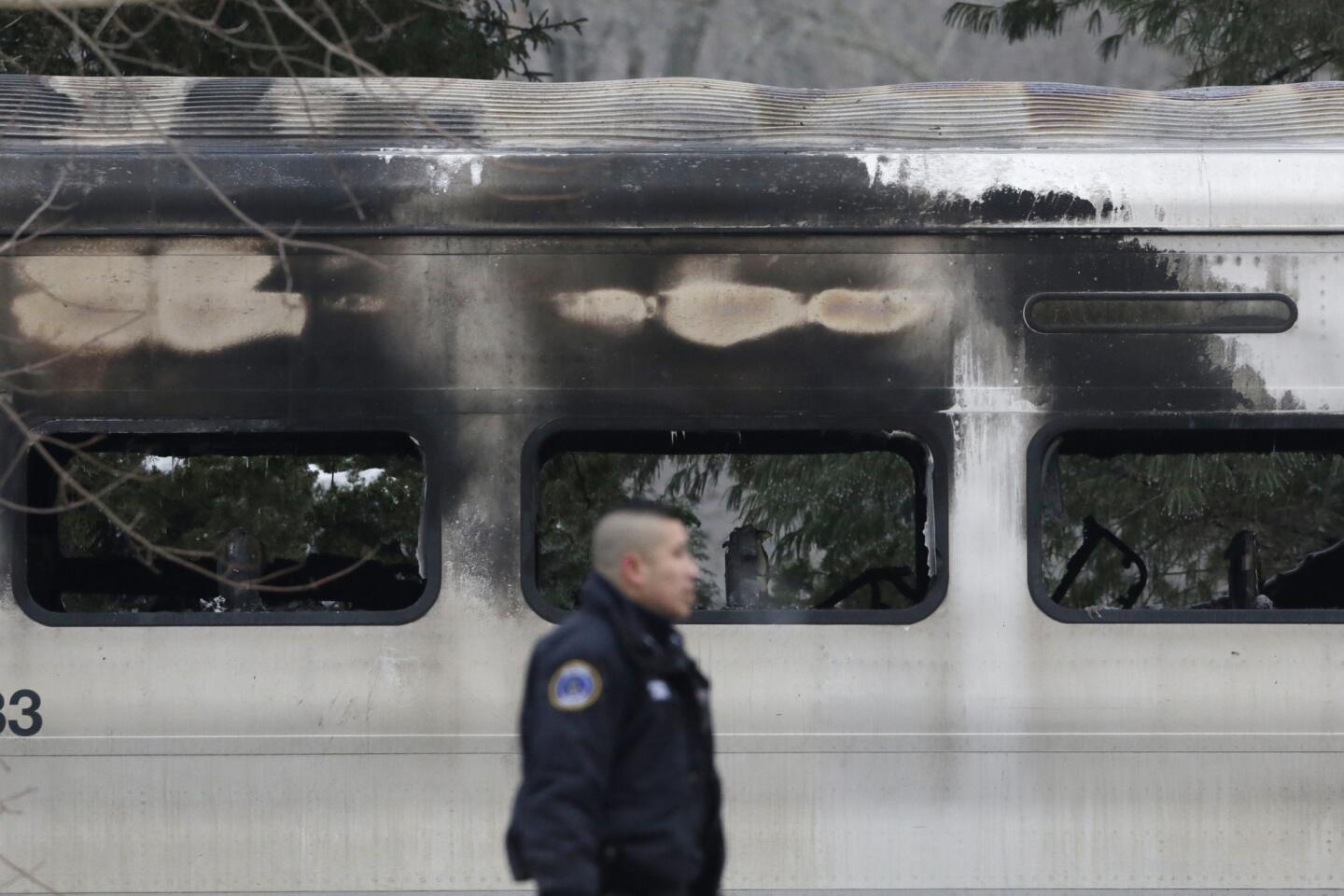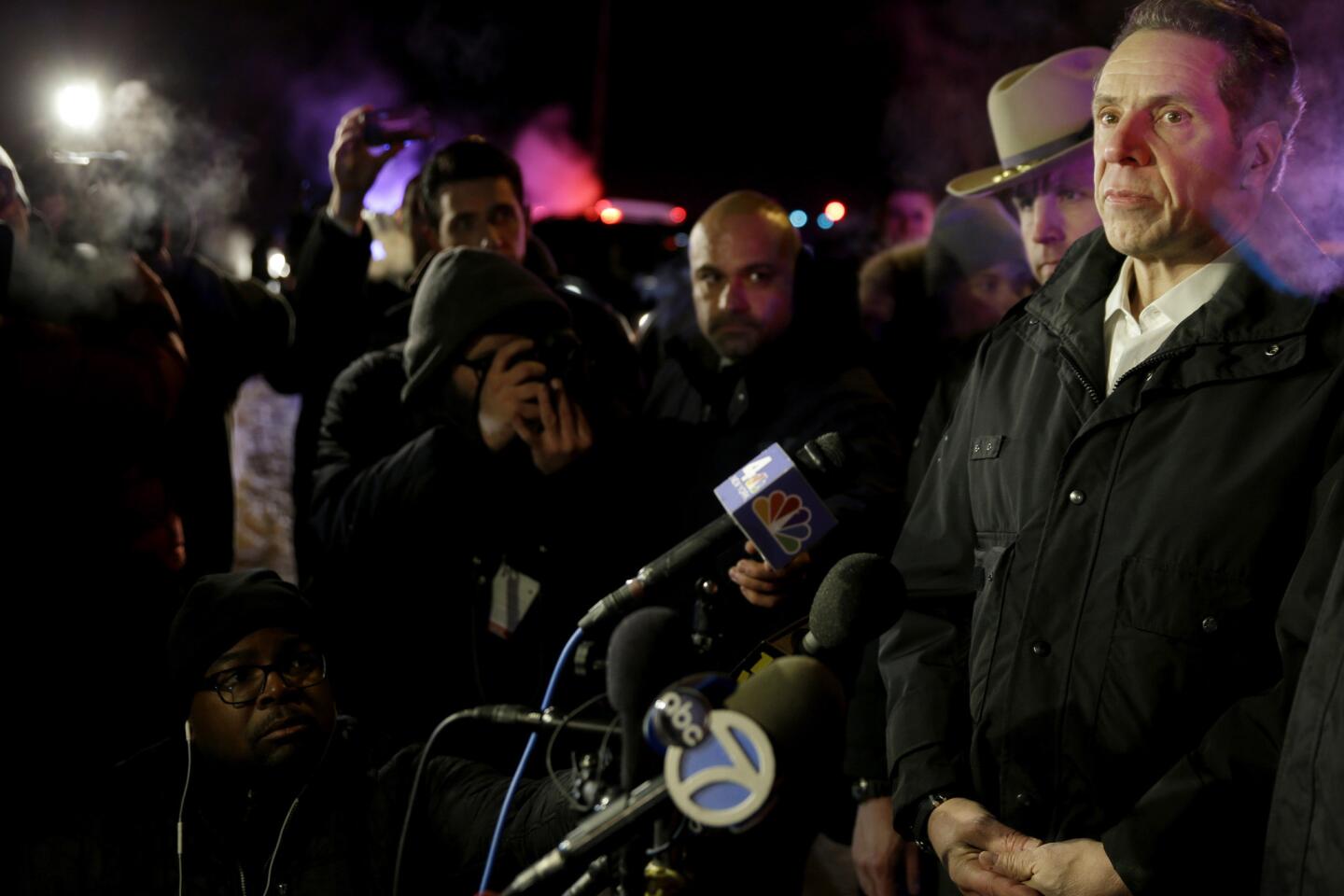Train engineer pulled emergency brake when he saw SUV on tracks
- Share via
Reporting from New York — A commuter train engineer pulled the emergency brake when he saw an SUV pull onto the tracks but could not avert a fiery collision that killed six people, investigators said Thursday.
National Transportation Safety Board investigators said the train was following the speed limit -- going 58 mph in a 60-mph zone -- and all its warning systems were operating properly when it struck the Mercedes SUV in the town of Valhalla, about 20 miles north of New York City.
The driver of the car and five passengers on the train were killed in the Tuesday night collision.
NTSB Vice Chairman Robert Sumwalt spoke at a news conference shortly after the agency released a series of photos of the train’s gutted and burned-out first car, which had been pierced by a large chunk of electrified rail that also sliced through the SUV.
Sumwalt said an initial review of the “event recorder” on the train showed that it had sounded the proper warning with its horn — two long blasts, followed by a short blast and another long blast — as it approached the intersection.
“The train speed as the train approached the grade crossing was 58 mph. The track speed limit is 60 mph,” Sumwalt said. “At 6:26:17 p.m. the engineer activated the emergency brake and after the application, the train horn sounded for four seconds.”
Investigators have not yet determined how far the train was from the crossing when its the emergency brake was activated. From the time of activation, he said, it took the train about 30 seconds and 950 feet to stop.
The NTSB’s preliminary investigation also found that the rail crossing gates were operating properly, Sumwalt said.
The collision, which also injured about a dozen people, happened at a gated crossing during evening rush hour. The train had left Grand Central Terminal about 5:45 p.m.
The central mystery is why the driver, Ellen Brody, a 49-year-old mother of three, stopped on the tracks as the crossing gates came down.
Sumwalt said one key piece of missing information was whether stalled traffic ahead prevented her from moving forward. He urged witnesses to contact the NTSB to help determine what preceded the crash.
He noted that the intersection was well marked, with the letters “RR X,” signifying a railroad crossing, painted onto the street’s pavement and two signs along the side of the road — one a round yellow sign with the “RR” and a large black X and another that read, “Do Not Stop on Tracks.”
The crossing’s flashing lights activated 39 seconds before the train reached the intersection, and the gates lowered properly a few seconds later, Sumwalt said.
Investigators hope to interview the conductor of the Metro-North Railroad train on Friday, Sumwalt said. The NTSB also will seek more information about Brody, including her cellphone records and information about how familiar she was with her new model Mercedes SUV, he said.
The inspection of the train’s decimated first car has been particularly difficult for NTSB investigators and police of the Metropolitan Transportation Authority, which operates Metro-North.
“They are combing carefully through ash, debris and pieces of third rail,” Sumwalt said. “It makes for a very lengthy process.”
Brody, 49, was a jewelry store employee and mother of three who lived in Westchester County, local media reported. Officials said she was from Edgemont, N.Y.
Rick Hope, who was behind Brody’s car during a traffic tie-up Tuesday, has said hers was one of many cars inching along a street that is traversed by the railroad track. At one point, traffic came to a halt, and Brody stopped inside the crossing gate line. Suddenly, Hope said, the gate came down on the car and lights began flashing, indicating Metro-North’s No. 659 out of Grand Central Terminal was coming up the track.
Instead of hurrying off the track, though, Hope said the SUV’s driver got out of her car and walked around to the back, as if to check for damage from the lowered gate. Then, instead of backing up, Hope said, she got back into her car and drove forward about 15 feet.
It is not clear whether she was trying to beat the train or whether she was confused in the darkness and did not realize she was in peril, Sumwalt said.
The force of the crash pushed the SUV about 1,000 feet up the track. As the train barreled forward with the SUV wrapped around its front, the track’s electrified third rail became dislodged and penetrated the SUV’s chassis and fuel tank. The rail then impaled the train, where it spread a fire fueled by the SUV’s gasoline.
Rail-crossing accidents are not rare, Sumwalt said earlier, but they usually do not result in fatalities on trains. Part of the investigation will focus on examining the crashworthiness and strength of the rail cars.
Officials identified the dead train passengers as Eric Vandercar, 53, of Bedford, N.Y.; Robert Dirks, 36, of Chappaqua, N.Y.; Joseph Nadol, 42, of Ossining, N.Y.; Walter Liedtke, 69, of Bedford Hills, N.Y.; and Tomar Aditya, 41, of Danbury, Conn.
Four people remained hospitalized Wednesday, one of them in critical condition.
Metro-North Railroad’s service resumed along its Harlem line Thursday morning.
The NTSB has much work ahead, Sumwalt said.
“What we have is a mosaic and we’re going to take different pieces of information, put it all together and then paint a picture of what’s happened,” he said. “We’re just collecting each of those pieces right now. We’re just now on day 2 of this investigation.”
More to Read
Sign up for Essential California
The most important California stories and recommendations in your inbox every morning.
You may occasionally receive promotional content from the Los Angeles Times.





















